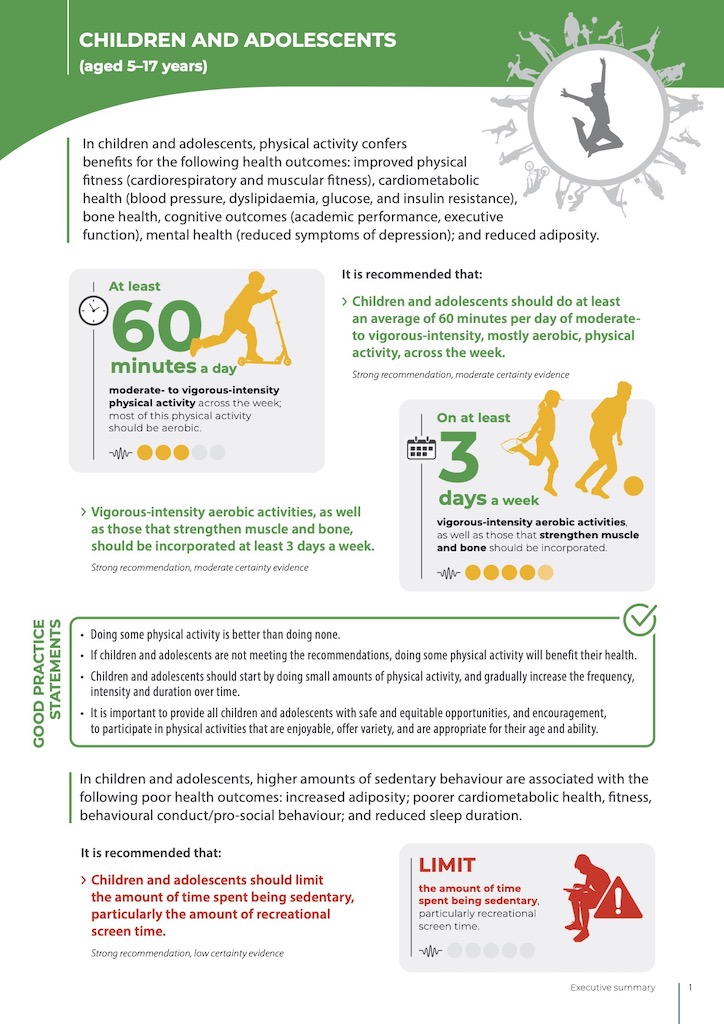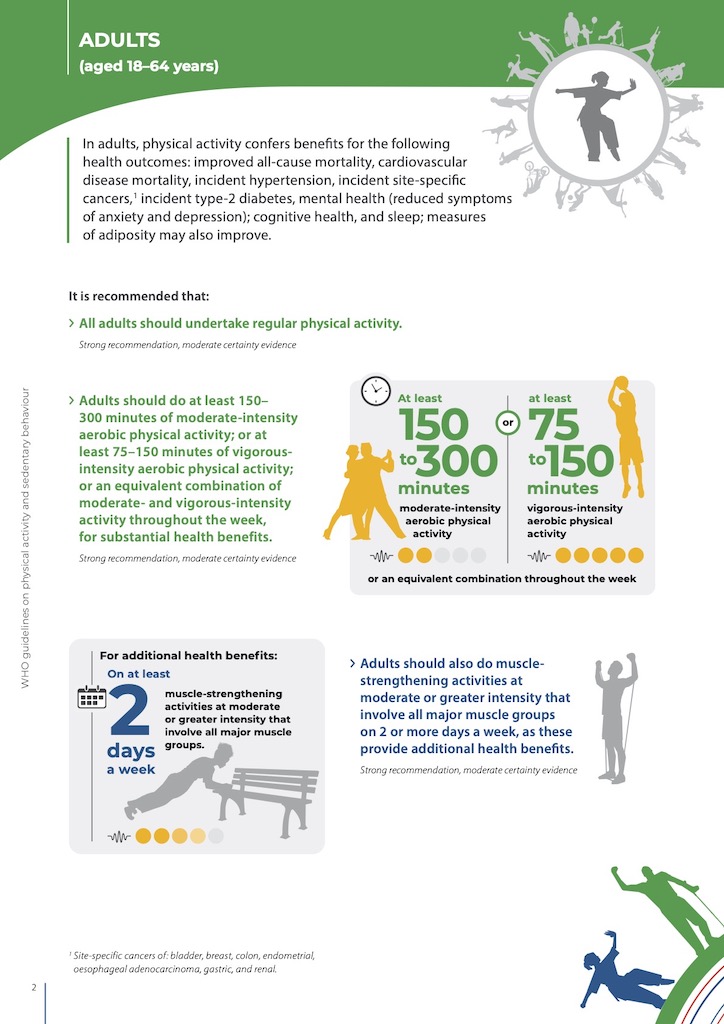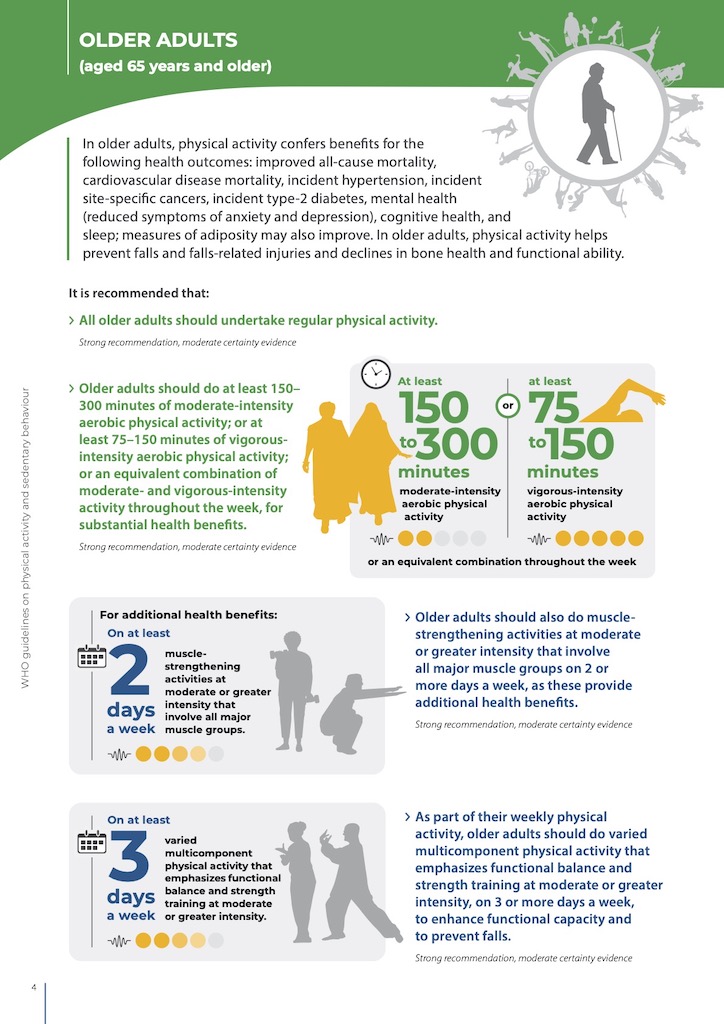The World Health Organisation (WHO) has updated their guidelines on physical activity and sedentary behaviour, stating that “every move counts”.
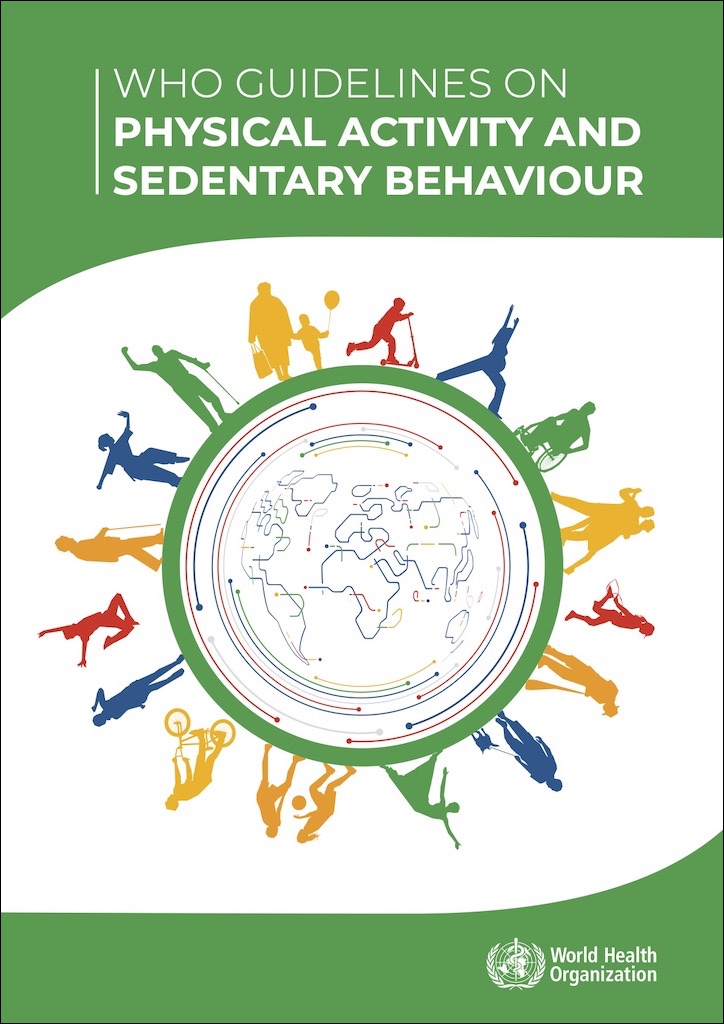
The guidelines make recommendations for different cohorts of people, such as children, adults, and seniors.
Notably, the guidelines highlight that “getting to and from places” is helpful physical activity, especially compared with the sedentary behaviour of sitting in a car.


The guidelines reference research that specifically showed that walking and cycling can significantly lower risk of mortality.
Other findings reported by Dinu et al. (2019) provided supporting evidence reaffirming that physical activity undertaken in domains other than leisure (or recreation) can be beneficial and specifically showed that active commuting (i.e. walking and cycling for transport) can significantly lower risk of all-cause mortality (RR= 0.92 [95% CI: 0.85–0.98]) (85).
WHO guidelines on physical activity and sedentary behaviour
Benefits of walking and cycling, compared with other higher impact sports, is that they occupy the “recommended range” and create fewer risks or harms:
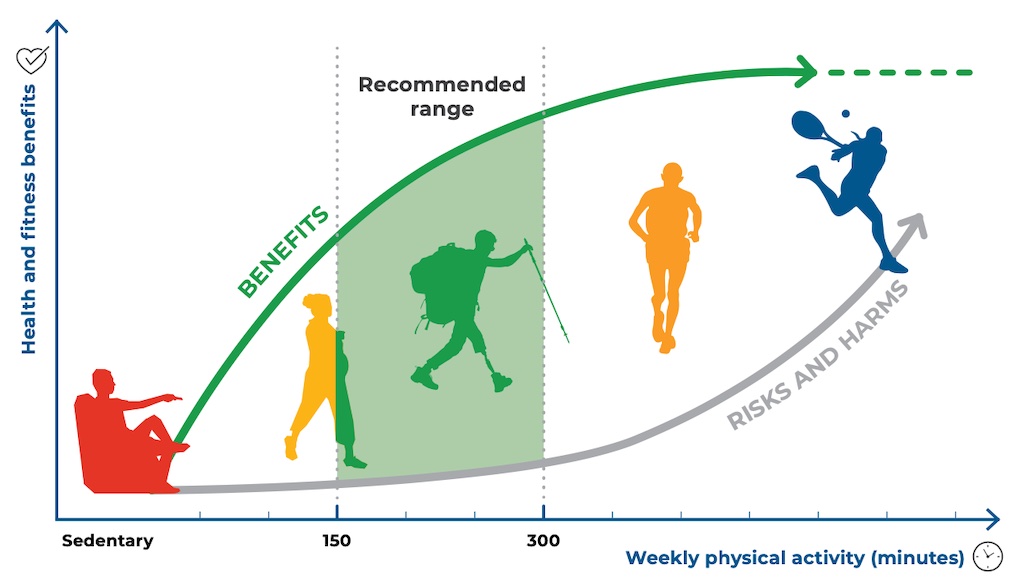
Our view
Streets Alive Yarra supports the WHO guidelines and urges local and state government to help people to integrate physical activity (walking and cycling) into their daily routines by investing in wider footpaths, more trees, a network of protected bicycle lanes and 30 km/h superblocks. Importantly, these investments would also help people to decrease the time spent on sedentary behaviour (in cars), and the associated negative impacts on public health.
Published 30th November 2020

